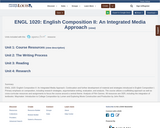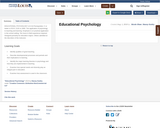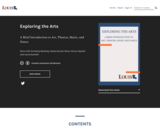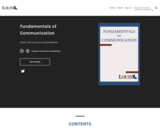Table of Contents:
Chapter 1 Linear Equations
Introduction to Linear Equations
1.1 Use a General Strategy to Solve Linear Equations
1.2 Solve a Formula for a Specific Variable
1.3 Graph Linear Equations in Two Variables
1.4 Slope of a Line
Chapter 2 Matrices
Introduction to Matrices
2.1 Systems of Equations
2.2 Solving Systems Using Matrices
2.3 Matrix Operations
2.4 Solving Systems with Inverses
2.5 Matrix Calculator
Chapter 3 Linear Programming
Introduction to Linear Programming
3.1 Inequalities in One Variable
3.2 Graph Linear Inequalities in Two Variables
3.3 Linear Programming
Chapter 4 Finance
Introduction to Finance
4.1 Simple and Compound Interest
4.2 Annuities
4.3 Payout Annuities
4.4 Loans
4.5 Multistage Finance Problems
4.6 TVM Solver Calculator
Chapter 5 Sets
Introduction to Sets
5.1 Basic Set Concepts
5.2 Subsets
5.3 Understanding Venn Diagrams
5.4 Set Operations with Two Sets
5.5 Set Operations with Three Sets
Chapter 6 Probability
Introduction to Probability
6.1 Concepts of Probability
6.2 Conditional Probability and Bayes Theory
6.3 Counting
6.4 Expected Value
Chapter 7 Logic
Introduction to Logic
7.1 Statements and Quantifiers
7.2 Compound Statements
7.3 Constructing Truth Tables
7.4 Truth Tables for the Conditional and Biconditional
7.5 Equivalent Statements
7.6 De Morgan's Laws
7.7 Logical Arguments
Chapter 8 Statistics
Introduction to Statistics
8.1 Gathering and Organizing Data
8.2 Visualizing Data
8.3 Mean, Median, and Mode
8.4 Range and Standard Deviation
8.5 Percentiles
8.6 The Normal Distribution
8.7 Scatter Plots, Correlation, and Regression Lines
8.8 Statistics Calculator
This textbook was created through Connecting the Pipeline: Libraries, OER, and Dual Enrollment from Secondary to Postsecondary, a $1.3 million project funded by LOUIS: The Louisiana Library Network and the Institute of Library and Museum Services. This project supports the extension of access to high-quality post-secondary opportunities to high school students across Louisiana and beyond by creating materials that can be adopted for dual enrollment environments. Dual enrollment is the opportunity for a student to be enrolled in high school and college at the same time.
The cohort-developed OER course materials are released under a license that permits their free use, reuse, modification and sharing with others. This includes a corresponding course available in Moodle and Canvas that can be imported to other platforms.



















